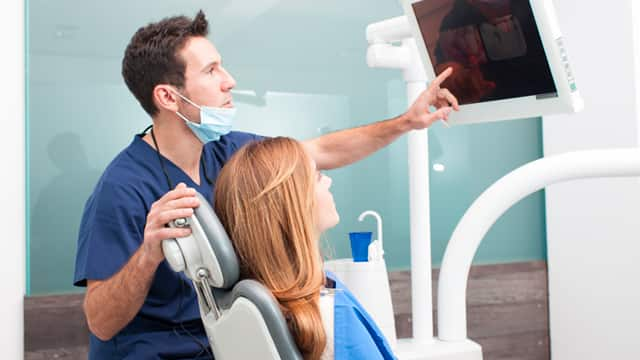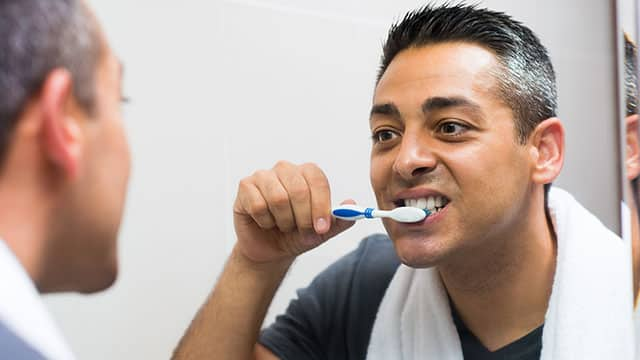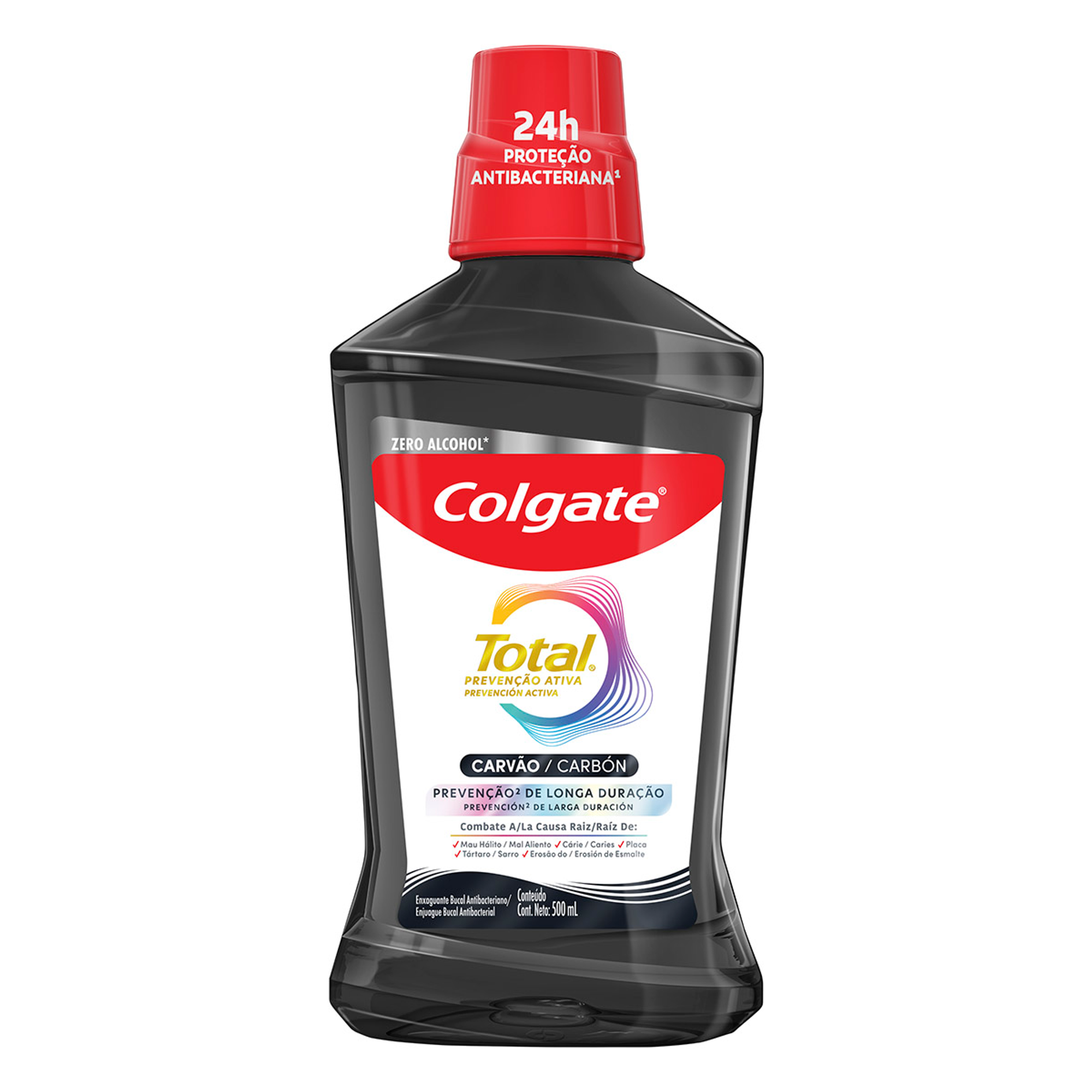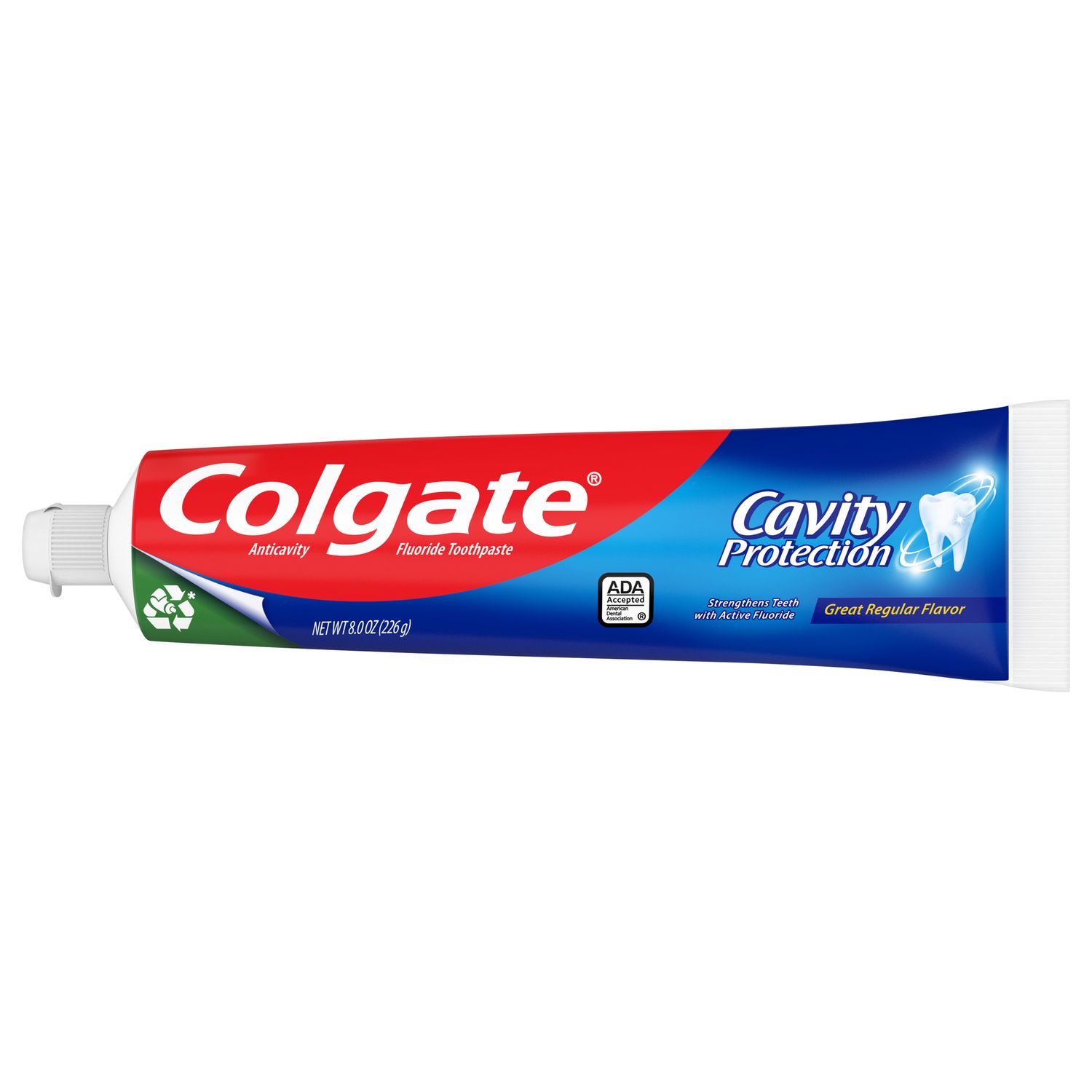-
-

FLUORIDE
What Is Stannous Fluoride Toothpaste?Discover what is Stannous Fluoride Toothpaste and its importance to prevent cavities and other oral health problems.

TEETH WHITENING
Whitening toothpaste - hydrogen peroxide vs. carbamide peroxideIf you lose one or more of your front teeth due to injury or decay, you may feel ...
-
Science & InnovationOral Health Commitment
- Oral Health Commitment
- Bright Smiles, Bright Futures
- Educational Resources
- Mobile Dental Van
- Volunteer
- ORAL HEALTH CHECK
- PRODUCT MATCH
- Oral Health and Dental Care | Colgate®
- Oral Health
- Bridge Or Implant: Which Is Best For You?


If you’ve lost a tooth or had to have one extracted, you may need a dental bridge or implant. Your dental professional will help you decide which one’s best for you, but here’s some information that is good to know.
What's A Dental Bridge?
A dental bridge is a restorative option your dental professional may suggest if your missing tooth is between two healthy teeth. A dental bridge is made of a false tooth suspended between two crowns that your dentist cements onto your healthy teeth on either side. The porcelain is matched to the color of your surrounding teeth. In short: a dental bridge bridges the gap between your teeth. If you're replacing a tooth or teeth near the back of your mouth, a dental bridge may be the best way to go.
What's A Dental Implant?
An implant is a false tooth attached to a titanium post your dental professional inserts into the jawbone. Implants are very natural looking. According to the American Academy of Implant Dentistry, implants also help prevent your jawbone from deteriorating. When teeth fall out or are extracted, the jawbone shrinks over time and changes our face's appearance and smile. An implant is embedded in the jawbone, and using the new tooth to bite and chew stimulates the bone, helping to prevent it from shrinking. Also important to know: if you're replacing a front or more visible tooth, the American Dental Association recommends implants for a more attractive smile.
What Are Some Differences Between A Dental Bridge And An Implant?
- Appearance. A dental bridge is more noticeable. Implants look more natural.
- Cost. A dental bridge may be less expensive than an implant.
- Time. You can get a bridge completed in two visits within a few weeks. Completion of an implant takes three to six months.
If you need to replace a tooth, chances are you'll need a dental bridge or an implant. The location of your new tooth, cost, and the time it will take for restoration are all important things to consider. Both options can restore your smile and your confident self. Do your research and talk to your dental professional to determine what's best for you.
Oral Care Center articles are reviewed by an oral health medical professional. This information is for educational purposes only. This content is not intended to be a substitute for professional medical advice, diagnosis or treatment. Always seek the advice of your dentist, physician or other qualified healthcare provider.
Related Articles

Implants
Implants 101Learn more about dentures, including dental implant procedures, and much more, from the Colgate Oral Care Center.

Implants
Dental Implant SurgeryDental implants are artificial teeth that are implanted into the mouth and jaw, often used when adults lose adult teeth. Learn more about cost, recovery and more.

Implants
How To Keep Your Abutment Tooth HealthyAfter getting a dental implant, it's important to care for your abutment tooth properly to ensure long-term success and optimal oral health. Here's how.

Implants
How Does an Implantologist Differ from a General Dentist?A general dentist can be your mouth's best friend. But if you need implants, your dentist may ask you to seek out the services of an implantologist.
Related Products

Esse enxaguante bucal multibenefício Colgate Total 12 Carvão Ativado apoia as defesas naturais da sua boca com o zinco. Ele também ajuda a manter os dentes mais brancos, além de combater germes e bactérias para uma limpeza total por até 12 horas.

Colgate Total Alcohol Free* Gum Health Mouthwash delivers 24-hour protection** against bacteria and also helps prevent gum problems

Colgate Total Fresh Mint Toothpaste fights bacteria, the root cause of many oral health issues such as gingivitis, tartar, sensitivity, weak enamel, bad breath, and cavities.

Formulated with Fluoride and with a great mint taste, Colgate Cavity Protection Toothpaste cleans thoroughly, strengthens teeth, and fights cavities.

Helping dental professionals
More professionals across the world trust Colgate. Find resources, products, and information to give your patients a healthier future




